In early spring, before sprouts begin to emerge from under the snow, you won’t find many edible plants in your garden. But edible weeds usually start to grow much earlier in the season than most vegetables, making foraging for wild edibles a favorite springtime activity. Foraging can also be a fun process for the whole family and is an excellent way to develop a deeper understanding of and appreciation for the natural world around us.
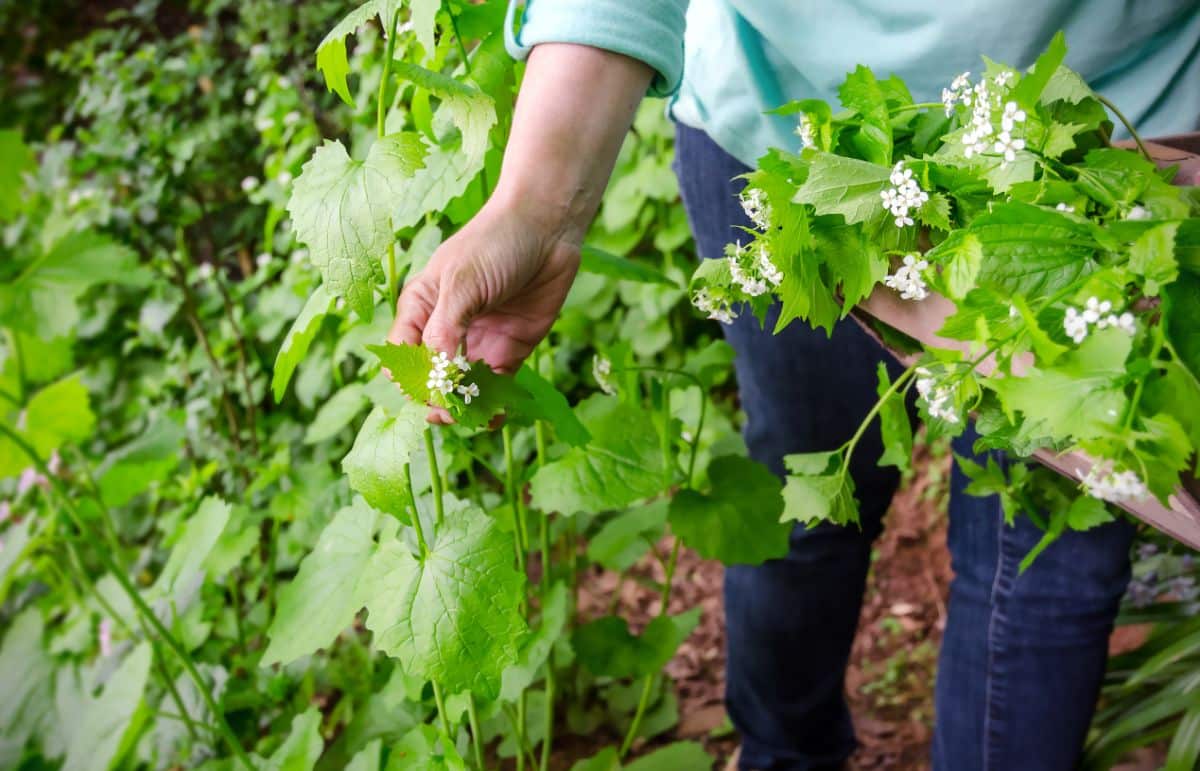
From common dandelions to lesser-known weeds like bittercress and dock, there are lots of edible plants that you can find growing right in your backyard or along hiking trails. Foraging for these plants can help you save money on your weekly grocery bill, and it can also put invasive plants, like Japanese knotweed, to good use!
In this guide, we’ll introduce you to some of our favorite common, edible weeds for foraging. These plants can be used in a wide range of dishes, including herbal teas, salads, and soups, and they’re tasty too!
Jump to:
- A note on foraging safety
- 21 edible weeds to forage in your backyard
- 1. Dandelion (Taraxacum officinale)
- 2. Purslane (Portulaca oleracea)
- 3. Plantain (Plantago spp.)
- 4. Clover (Trifolium spp.)
- 5. Violets (Viola spp.)
- 6. Lamb’s Quarters (Chenopodium album)
- 7. Cleavers (Galium aparine)
- 8. Burdock (Arctium spp.)
- 9. Japanese Knotweed (Reynoutria japonica)
- 10. Bittercress (Cardamine hirsuta)
- 11. Curly Dock (Rumex crispus)
- 12. Thistle (Cirsium spp. and Carduus spp.)
- 13. Wood Sorrel (Oxalis spp.)
- 14. Chicory (Cichorium intybus)
- 15. Wild Garlic (Allium ursinum)
- 16. Chickweed (Stellaria media)
- 17. Mallow (Althaea spp.)
- 18. Shepherd’s Purse (Capsella bursa-pastoris)
- 19. Sheep Sorrel (Rumex acetosella)
- 20. Garlic Mustard (Alliaria petiolata)
- 21. Stinging Nettle
- Frequently asked questions
- Summary
A note on foraging safety
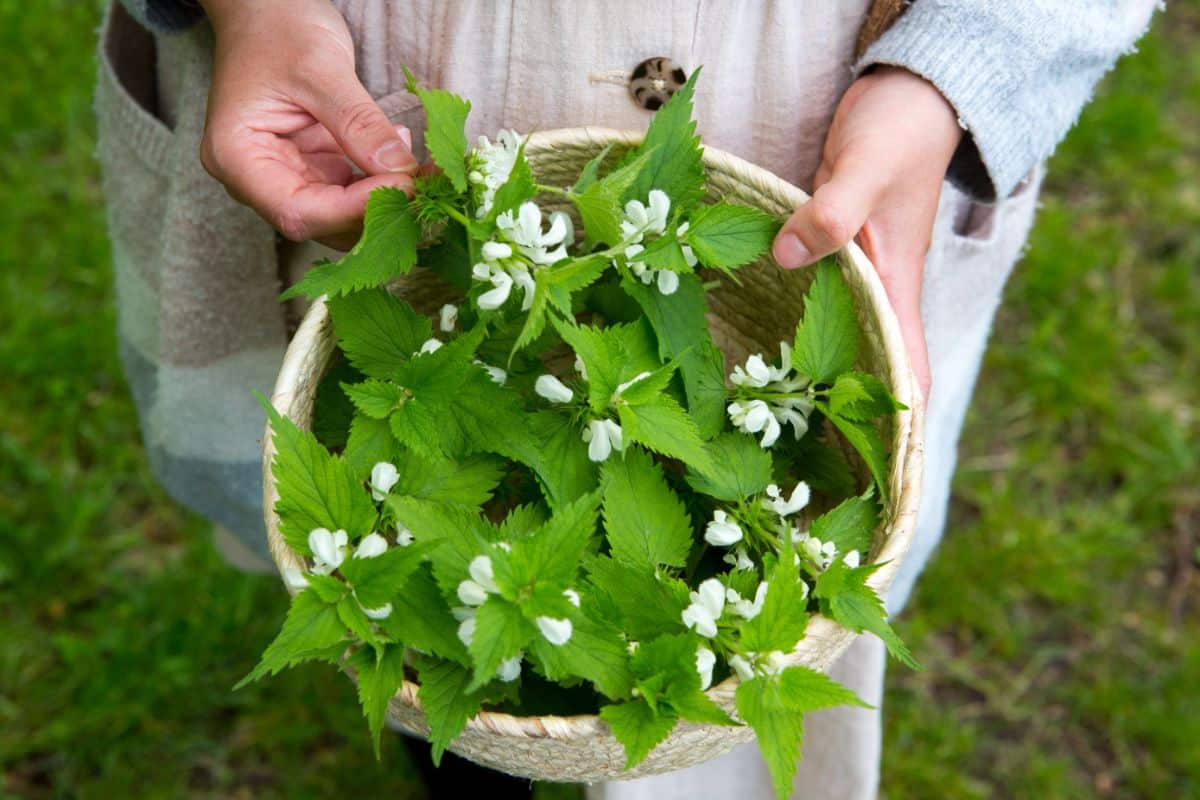
Before you start foraging for wild weeds, it’s imperative that you understand a bit about plant identification. Although the plants covered in the list below are edible, there may be some lookalike plants that aren’t safe for consumption, so you need to be certain that you’re able to identify plants correctly before harvesting them.
Joining a local foraging or plant identification group can be a good idea, and you’ll meet lots of like-minded plant enthusiasts who are usually very happy to teach you what they know. If there aren’t any foraging groups near you, a handy plant identification guide can help. However, if you’re not 100% certain about the species of plant you’re harvesting, never eat it.
Beyond correct plant identification, it’s also essential that you harvest weeds only from safe areas. While you may spot some chicory or knotweed growing along roadways and other exposed spots, these areas are often sprayed with toxic chemical herbicides, and plants from these locations are not safe to eat.
Instead, look for weeds in your own backyard or in out-of-the-way spots where human activity is scarce and chemical spraying is non-existent. That way, you’ll know exactly what you’re harvesting and that the plants you pick are safe to eat.
21 edible weeds to forage in your backyard
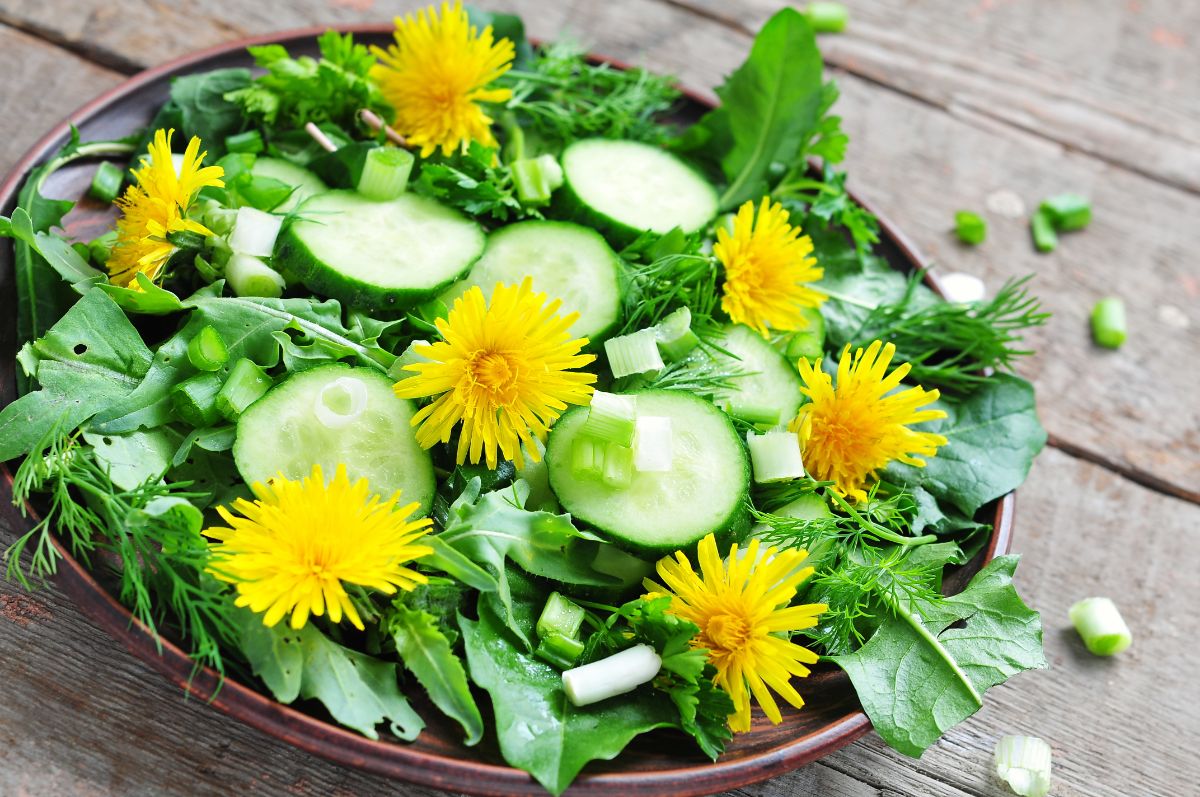
Many of the weeds in the list below are common enough that they are probably already growing in your garden. But when you start seeing these plants as edible, weeding your beds takes on new importance and excitement. You’re getting free leafy greens and vegetables, after all!
Other weeds on this list, such as mallow, may not appear as often in backyard gardens, but they can often be found when going for hikes and other outdoor adventures. So, next time you go for a walk in the woods, why not bring along a plant identification book and start looking for wild greens to bring back to your kitchen?
1. Dandelion (Taraxacum officinale)
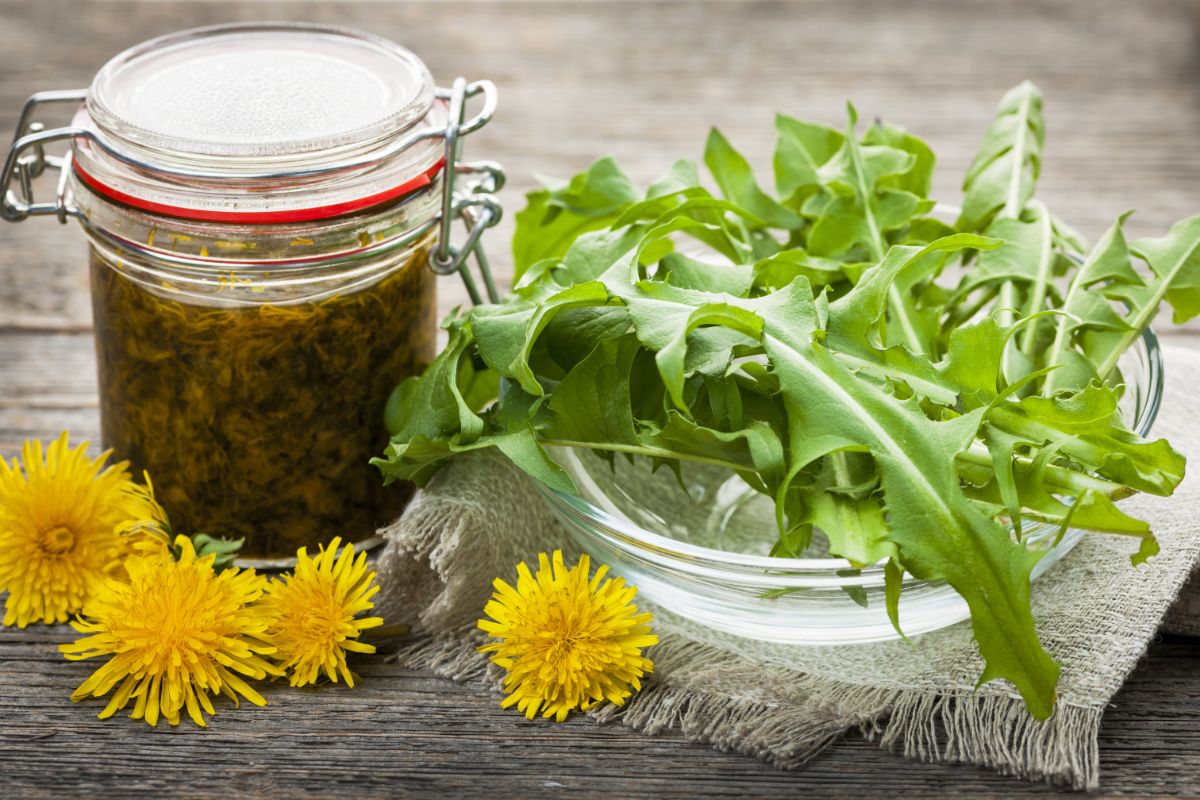
No list of foraged, edible plants would be complete without mentioning the humble dandelion. These ubiquitous plants are often hated by gardeners due to how quickly they spread, but these plants are incredibly useful in the kitchen! They are also favored among bees and other pollinators.
Every part of a dandelion is edible, including roots, leaves, and flowers. Flowers make cheery salad toppers, while greens can be used fresh in salads or cooked, like spinach and other leafy greens. Roots are usually roasted prior to use and can be ground into a nutritious coffee substitute.
2. Purslane (Portulaca oleracea)
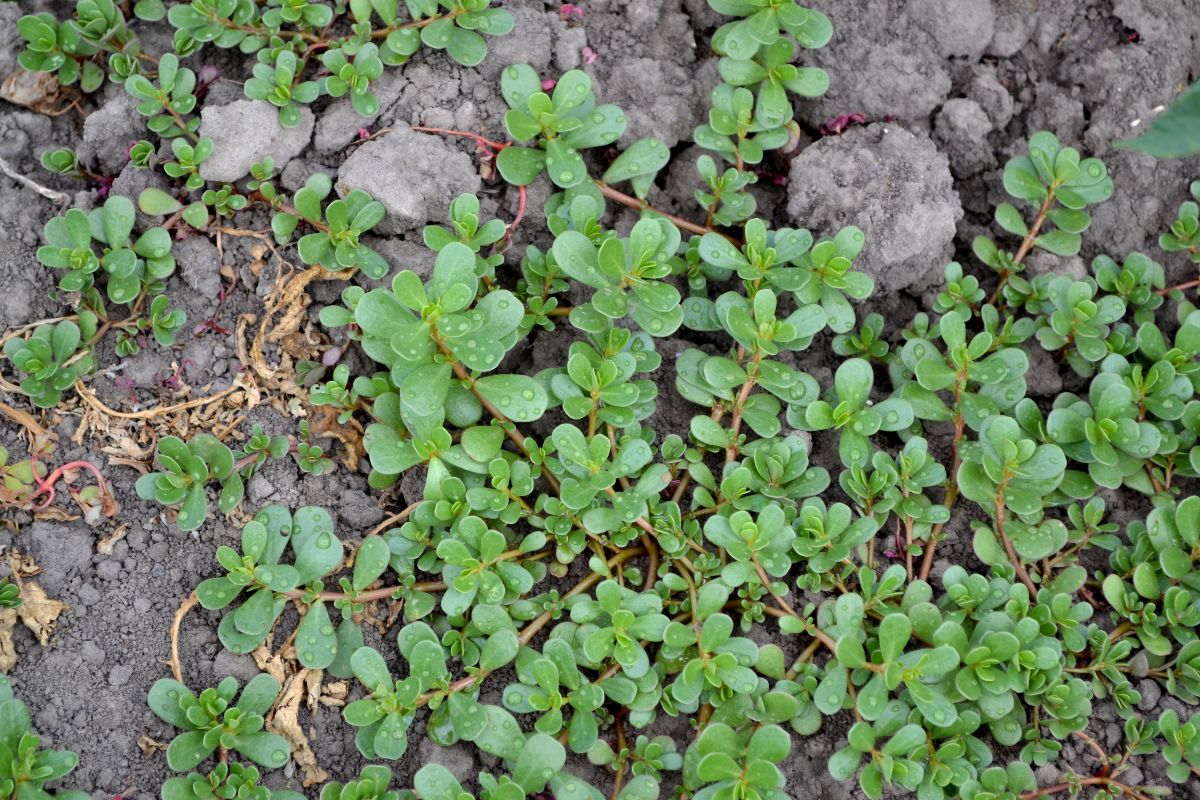
Purslane may be called a “weed” by some, but it is a downright delicious plant that is intentionally cultivated by many gardeners. In fact, varieties of purslane can be purchased as seeds and sown in your garden, although wild purslane is usually quite happy to spring up in your garden beds all on its own!
A rich source of Omega-3s, purslane is considered to be a super food and is often used in Mediterranean cuisine. Stems, flowers, and leaves are all edible and provide a delightful crunch when served raw in salads and other dishes. Purslane can also be cooked like other greens, and it can even be pickled.
3. Plantain (Plantago spp.)

There are many different types of plantain, including broadleaf and narrowleaf plantain, and all of them are edible. Often found in sidewalk cracks and along garden pathways, these vigorously growing weeds rapidly self-sow and spread. This can be a hassle if you like to garden, although if you acquire a taste for plantain, you might not mind so much!
Plantain leaves can be a bit tough, but otherwise, they make fine substitutes for spinach and can be cooked just like any other leafy green. Leaves can also be eaten fresh in salads or baked like kale chips.
4. Clover (Trifolium spp.)

Not all clover varieties are edible. In fact, some types, like Alsike clover, are toxic. However, the clover types you’re most likely familiar with are edible, including red and white clover.
All parts of these clover varieties can be eaten, including their roots, leaves, and flowers. Flowers are often steeped into homemade jams, jellies, and teas, while leaves can be used fresh in salads. Clover is also an excellent alternative lawn covering and is much better for pollinators than turf grass.
5. Violets (Viola spp.)
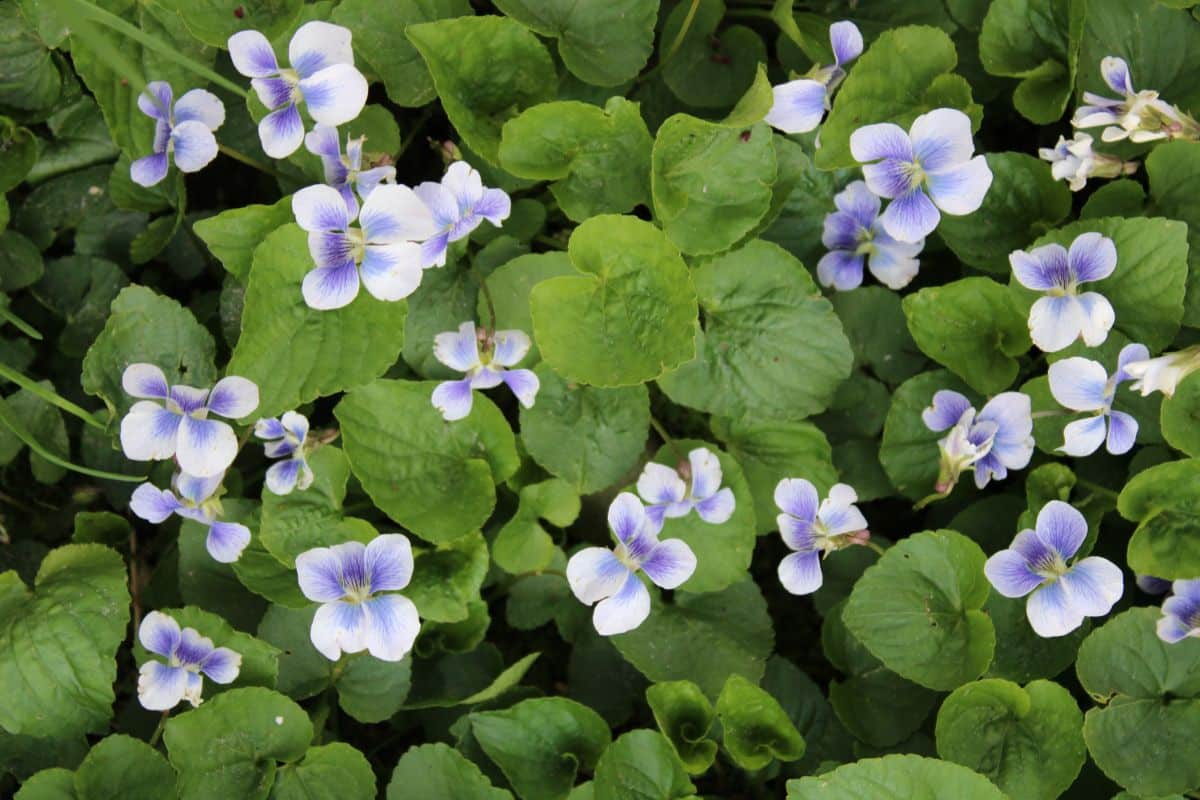
Violets are very pretty plants with their classic white and purple blooms. But left unchecked, they can rapidly spread throughout ornamental beds and pop up in grass lawns as well. While they aren’t as difficult to eradicate as some of the other weeds on this list, violets can grow fast, and they need frequent weeding to keep them from invading your garden.
All parts of violets are edible, including their leaves and flowers. Flowers can be brewed into a tea and turned into jellies, and they also make very pretty salad toppers and ice cube accents. Leaves are easy to slip into fresh salads and cozy soups too!
6. Lamb’s Quarters (Chenopodium album)
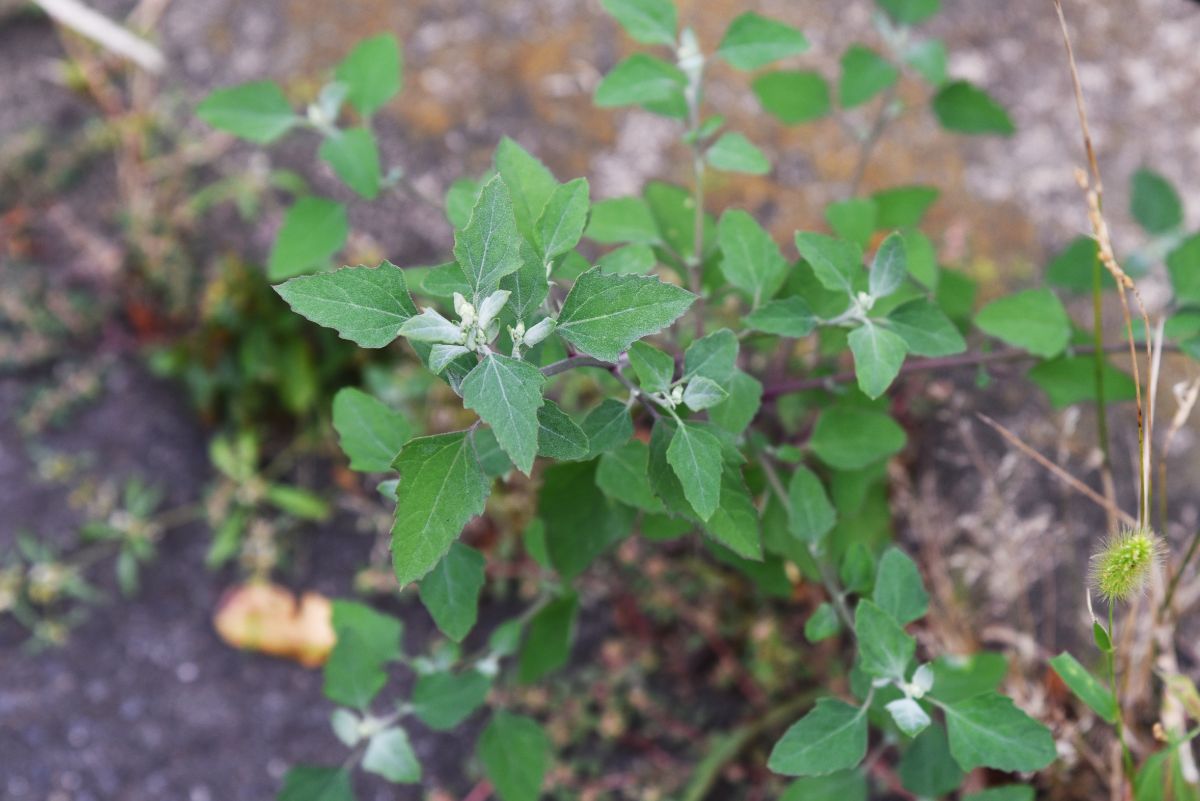
Also known as goosefoot, lamb’s quarters are prolific growers and rapidly spread through their seeds. Interestingly, they are actually a type of wild quinoa, and those seeds can be allowed to mature and then used as a grain. Leaves are also edible and taste a lot like spinach.
Easily recognized by their angular leaves, lamb’s quarters’ leaves are silvery on the undersides and may have silver tones throughout the plant too. Seeds appear in clusters and mature throughout the summer and into fall. Because these plants are just so useful, some gardeners choose to weed around them in their beds, although seeds should be deadheaded to keep these plants from self-seeding.
7. Cleavers (Galium aparine)
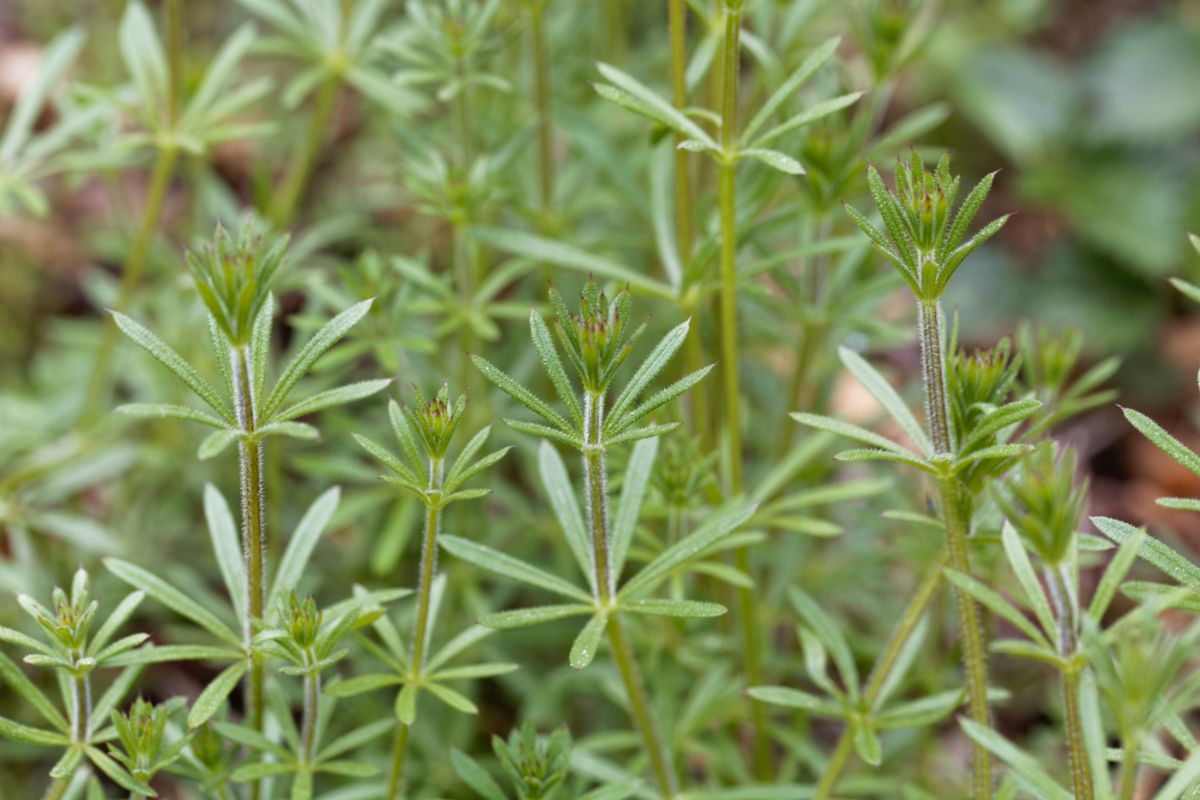
Also known as bedstraw, cleavers is a common garden weed that has whorled leaves that can stick to clothing and hands -- hence cleavers’ nickname “Velcro plant.” Small, white flowers appear in June to July and rapidly set seed, which can cause quite a nuisance in garden beds. In fact, cleavers can grow invasively in some areas, so you’ll want to pull this plant if you spot it in your garden.
But once you’ve weeded out cleavers, don’t chuck them in the trash. Edible leaves and young shoots can be cooked into soups, stews, and pasta. Seeds are also traditionally roasted and used as a coffee substitute.
8. Burdock (Arctium spp.)
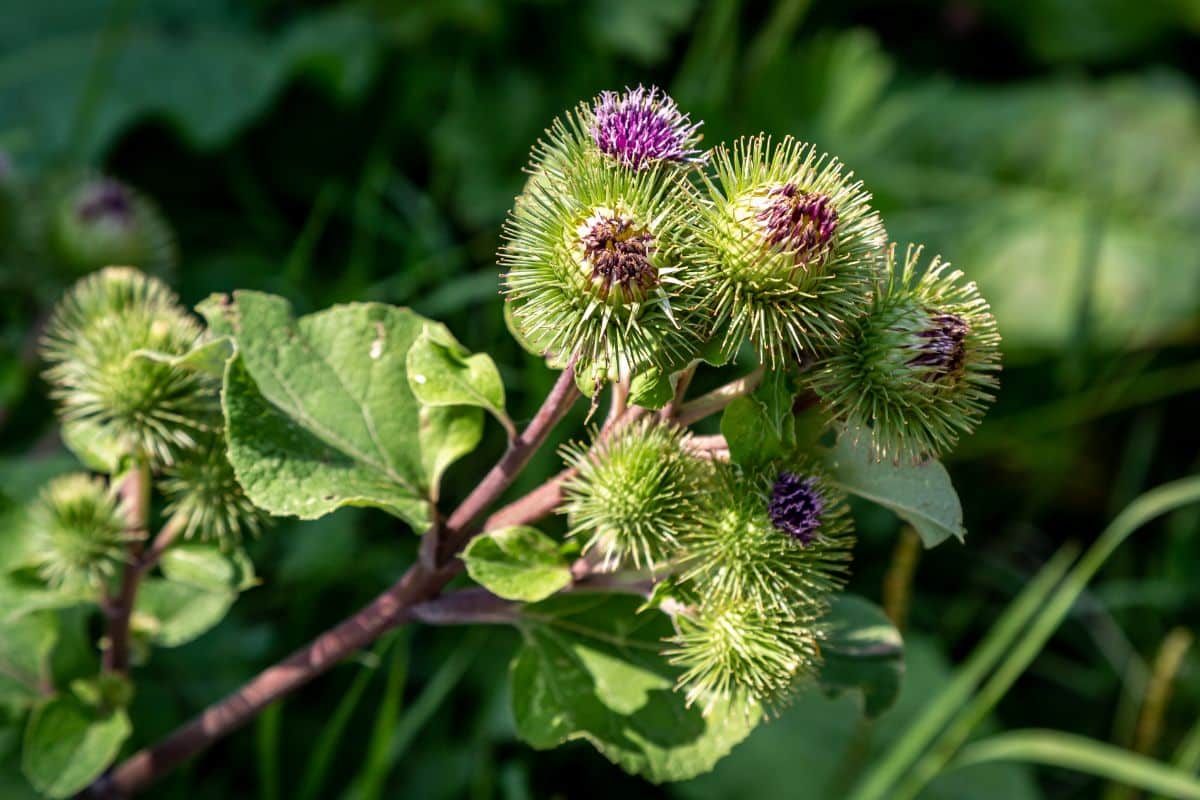
A type of thistle, burdock is well-known for its spiky, globular seed pods or burrs. These burrs are often used in wreath making, and their ability to stick to pretty much anything was actually the inspiration for Velcro! While those burrs may not be edible, almost every other part of the burdock plant is, including its leaves, stems, and roots.
Burdock’s tap root can grow up to 2’ long, which makes this plant quite difficult to remove from your garden. But if you can manage to dig it up, burdock root is one of the tastiest parts of this plant and is actually used as a vegetable in Asian cuisines. Young flower stalks can be steamed and eaten as a substitute for artichokes, while leaves are often used as a natural wrapper for foods while cooking.
9. Japanese Knotweed (Reynoutria japonica)
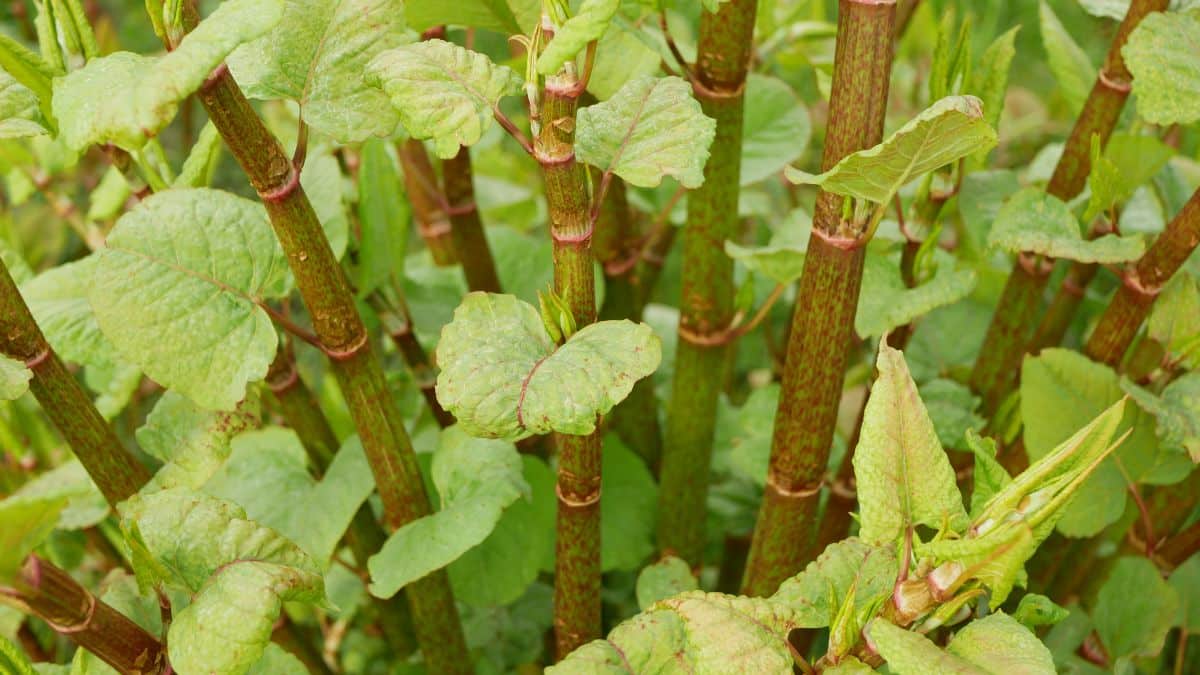
Japanese knotweed is an invasive weed that can destroy ecosystems and be very difficult to eradicate from backyard gardens. This plant emerges in spring, and its rapidly growing, segmented stems look a bit like bamboo. In summer, Japanese knotweed blooms a profusion of foamy, white flowers.
Japanese knotweed most often grows in disturbed areas where people are active, such as along highways and construction sites. For this reason, if you’re foraging for knotweed or any other wild herb, be sure that you’re harvesting from clean areas that have not been sprayed with herbicides or other chemicals. Also, always be careful and collect every piece of knotweed you cut, as this plant can regenerate from even a small section of root or stem.
Knotweed has a flavor that is somewhere between rhubarb and asparagus, depending on how you prepare it. Most often, leaves and shoots are harvested in spring when they’re still young and tender. A favorite recipe among foragers is strawberry and knotweed pie -- a creative riff on the classic strawberry rhubarb.
10. Bittercress (Cardamine hirsuta)
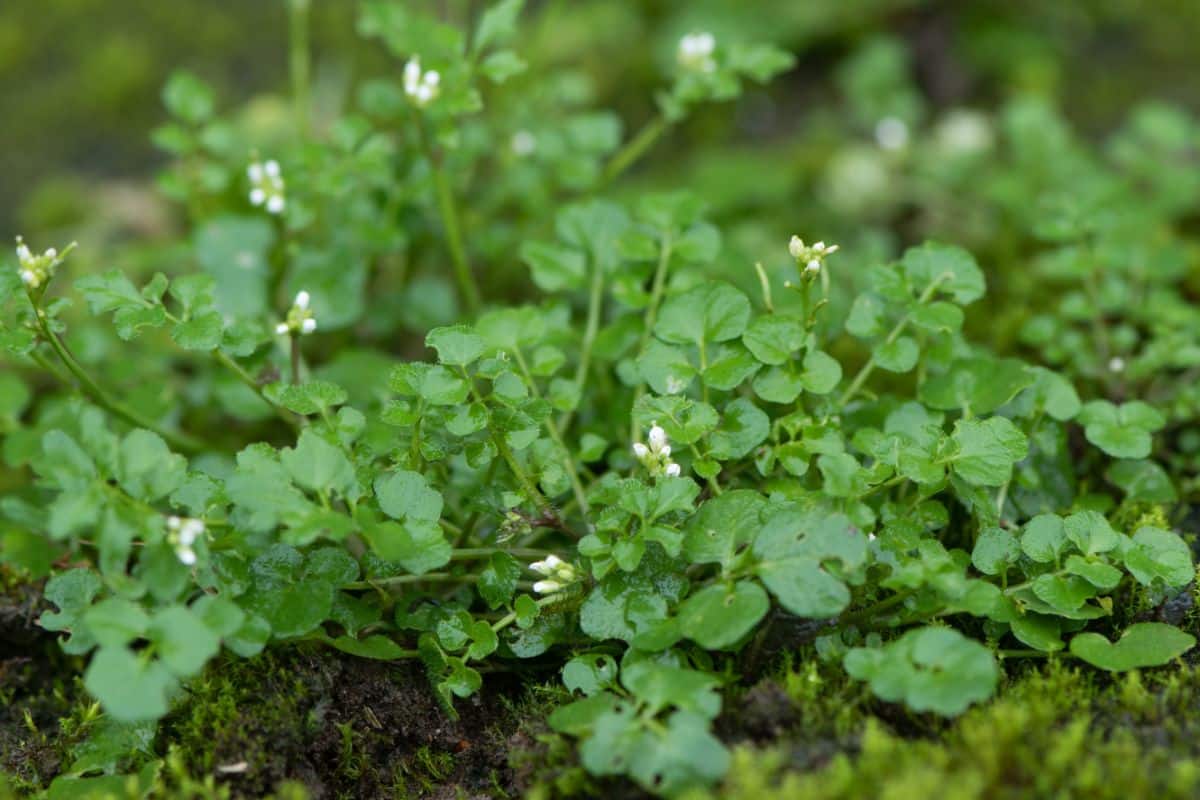
Don’t let the name “bittercress” deter you. This plant actually isn’t bitter at all but has a mild and peppery flavor that is delicious in salads and when used as a microgreen. A member of the mustard family, this plant is full of antioxidants like vitamin C, as well as calcium and magnesium.
Rounded leaves emerge from the center of the plant and form a rosette-like shape. These leaves are tender yet crisp, and the plant’s small, white flowers are also edible if slightly chewy. A fast-growing weed, bittercress can often be found in lawns where it grows mat-like on moist soil.
11. Curly Dock (Rumex crispus)
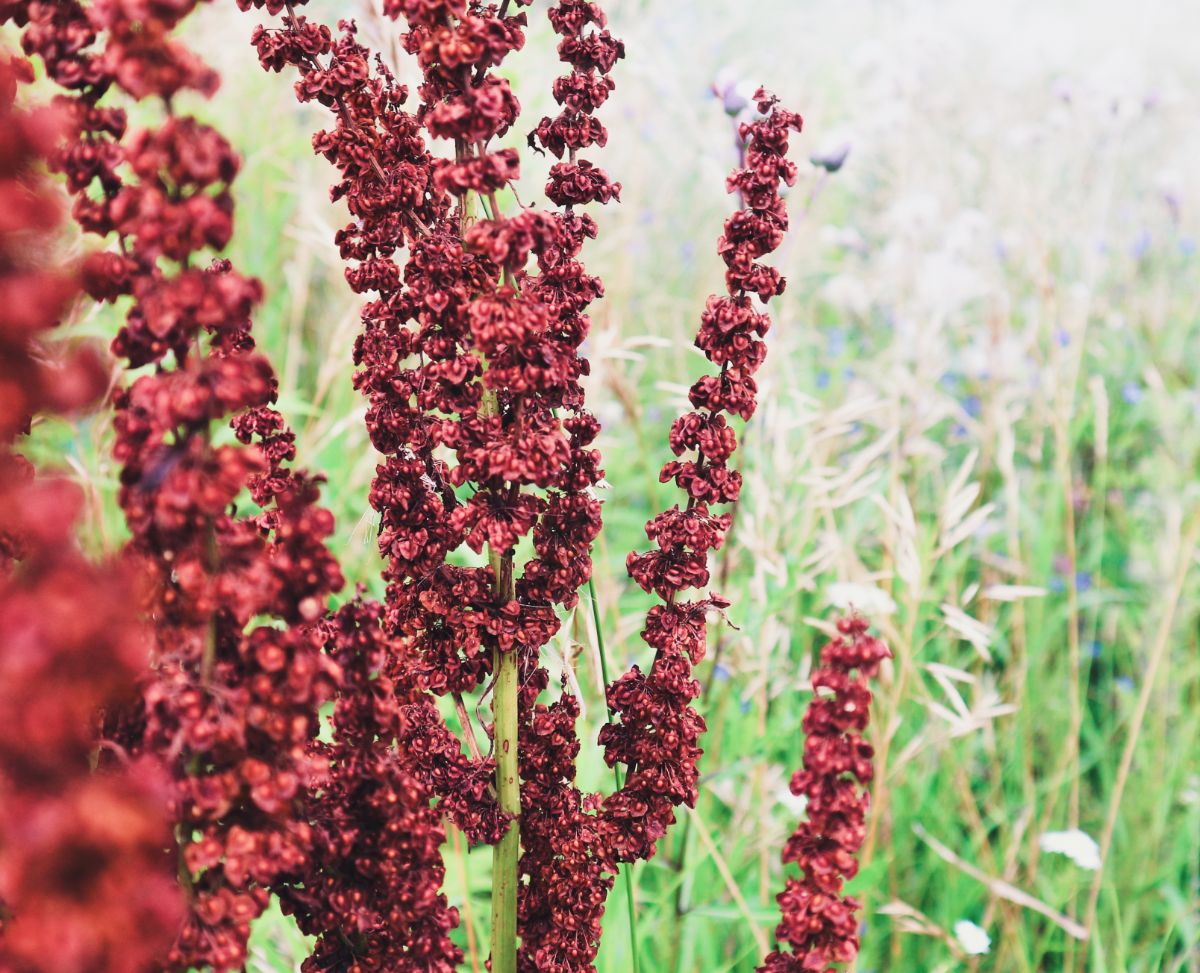
The curly dock looks a lot like burdock, with similarly shaped leaves and long tap roots that make digging out this weed a chore. Unlike burdock, however, the curly dock does not produce burrs. Instead, this plant blooms a large, airy flower in spring that matures into a distinct, deep red tone throughout the summer.
Curly dock flowers produce a lot of seeds, and they need to be pulled out of your garden before they self-sow. Once you’ve dug up a curly dock, leaves can be cooked into curries or baked and served like kale chips. Seeds can be ground into a flour that is similar to buckwheat flour, and roots are edible, too, although they can be an acquired taste.
12. Thistle (Cirsium spp. and Carduus spp.)
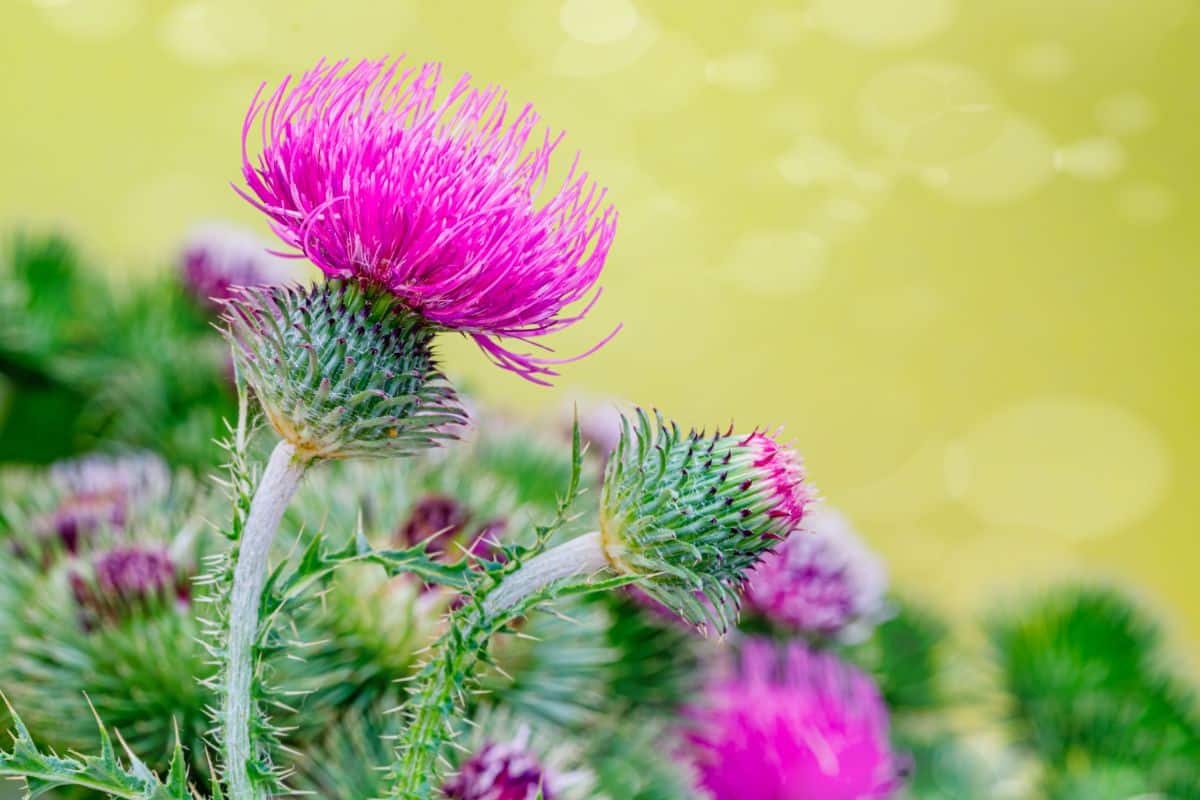
All true thistles are edible, although not all of them taste good, and their natural spines can be difficult to work with. That said, they can be considered useful survival food, and they can make for interesting eats if you’re up for a new experience.
Both the roots and stems are edible, but the stems need to be peeled before they’re eaten. Many thistles are biennial plants and can be harvested during their first or second year. Foragers say second-year flower stalks have better flavor.
13. Wood Sorrel (Oxalis spp.)
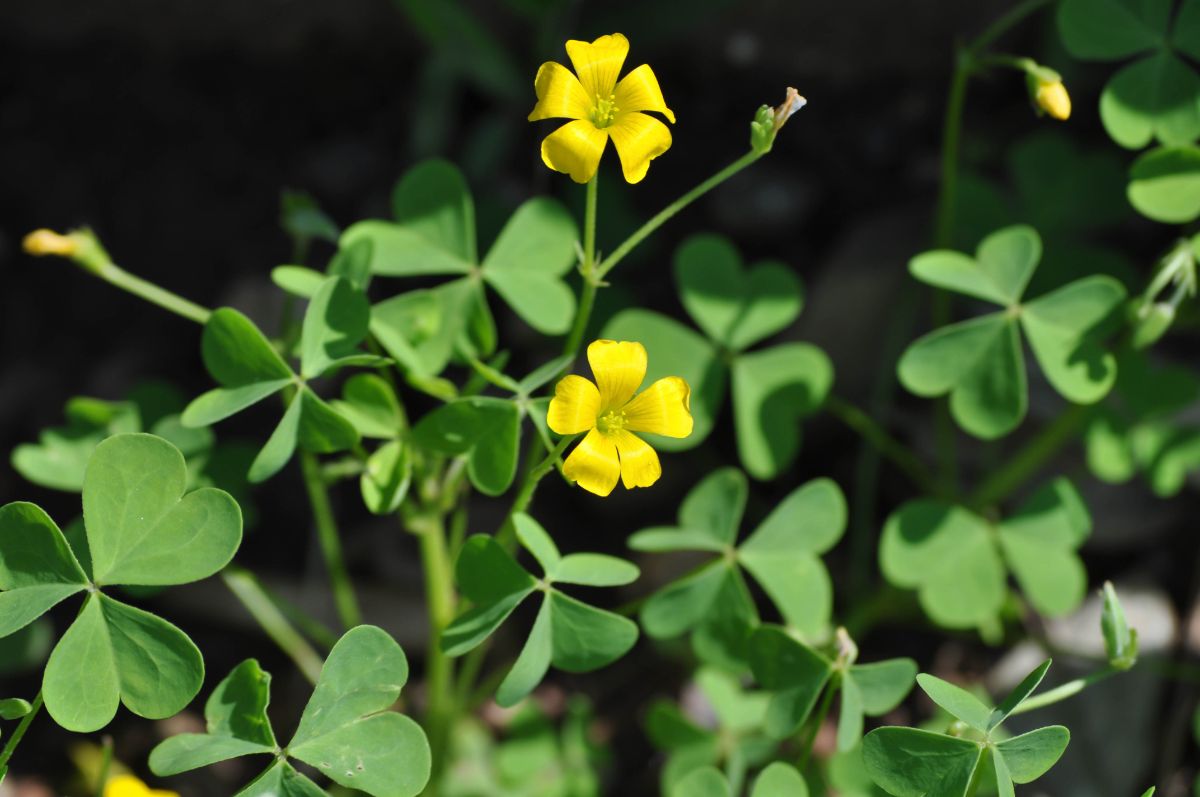
While wood sorrel isn’t related to true sorrel, it has a similar lemony flavor that makes a refreshing snack while gardening. Flowers, leaves, and seeds are all edible, although they can contain a high level of oxalic acid, so you don’t want to eat too much at once. Sprinkling wood sorrel onto salads and sandwiches, however, can make for an intriguing and flavorful garnish!
Wood sorrel looks a bit like clover, with rounded leaves that are divided into three parts. Small, yellow flowers also make it easy to identify this plant. Wood sorrel blooms spring through fall and rapidly seeds itself, giving you more reason to forage often!
14. Chicory (Cichorium intybus)
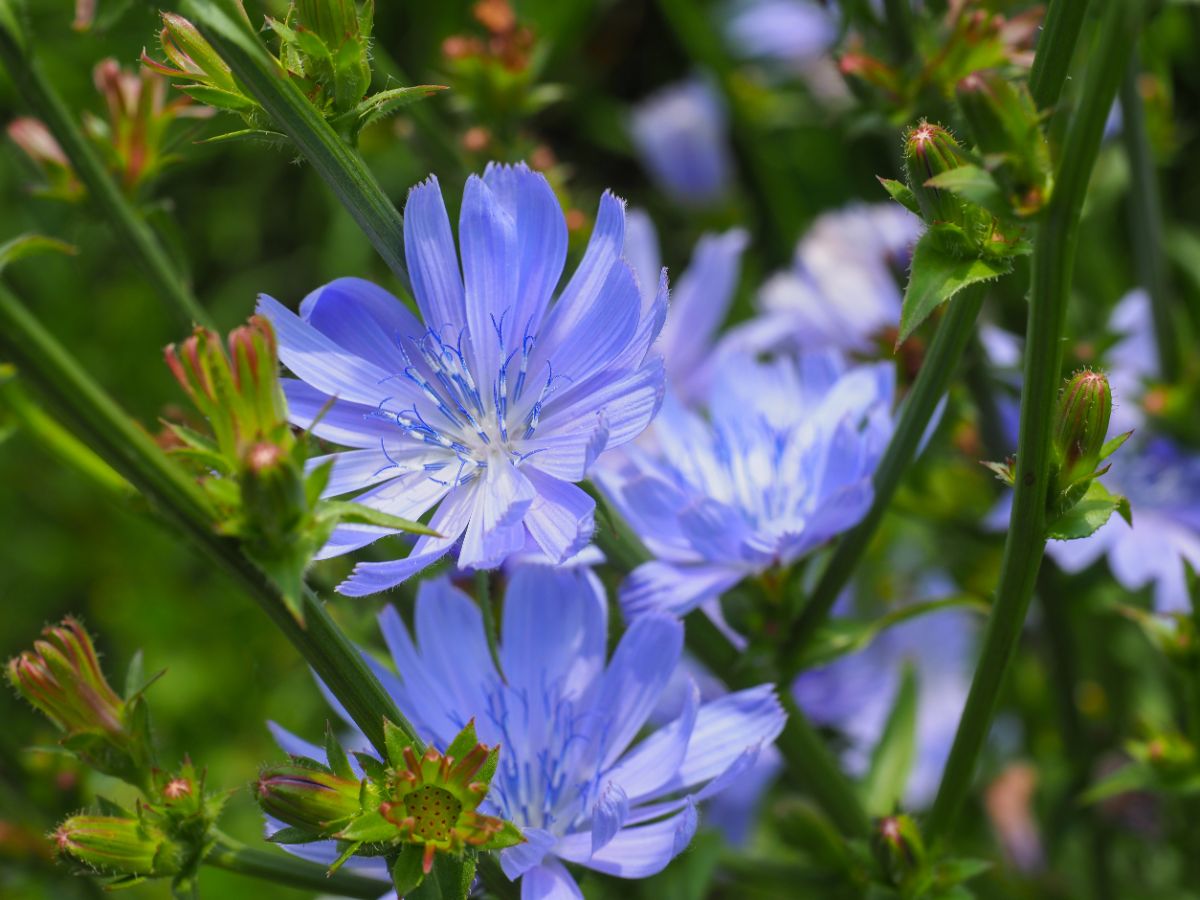
Chicory is often found along the edges of roadways and hiking trails, where its periwinkle blue flowers are hard to miss. This tall and pretty plant features daisy-like flowers that start to bloom in June and can continue to flower well into fall. If you’re interested in wildcrafting, chicory flowers can be used to make natural dyes.
Chicory leaves, flowers, and roots are all edible and can be used in a wide variety of dishes. Greens are a favorite in many Italian recipes and are delicious when sauteed with a bit of butter and garlic. Most famously, chicory roots make an excellent coffee substitute when they’re roasted, dried, and ground into a fine powder.
15. Wild Garlic (Allium ursinum)

Like some of the other plants on this list, wild garlic has some toxic lookalikes, so you need to be very careful when harvesting this plant and only pick it if you are certain you know what it is. Wild garlic is similar in appearance to autumn crocuses, lily of the valleys, and a few other plants, which are not edible.
Wild garlic has smooth, lance-shaped leaves and small, white, star-shaped flowers that bloom from April to June. However, the clearest way to know that you’re dealing with wild garlic is its characteristic garlicky smell. Young leaves and flowers can be mixed into salads or used like chives, while older leaves are absolutely scrumptious in homemade pesto.
16. Chickweed (Stellaria media)
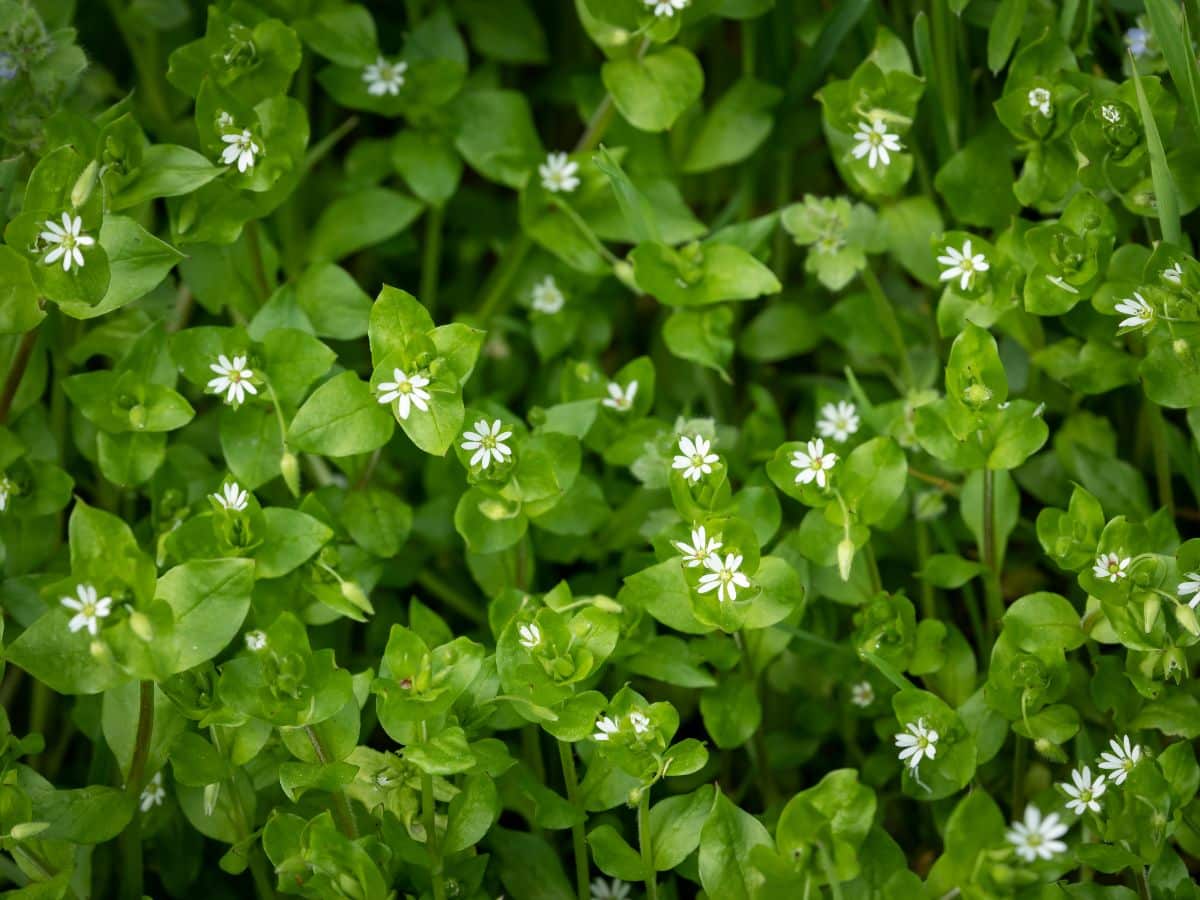
A low-growing plant, chickweed forms a dense mat as it matures and can easily choke out young seedlings in your garden. A cool weather plant, chickweed is commonly spotted in spring gardens, while summer heat can cause the plant to die back. Chickweed is most easily recognized by its lance-shaped leaves and abundance of small, white, daisy-like flowers.
Chickweed can rapidly spread in garden beds, so it should be pulled out regularly to keep it from taking over. The entire plant, minus the roots, is edible and can be eaten raw as an easy garden snack! You can also bring chickweed indoors and whip it up into a refreshing homemade pesto, chickweed wine, or fresh salad.
17. Mallow (Althaea spp.)
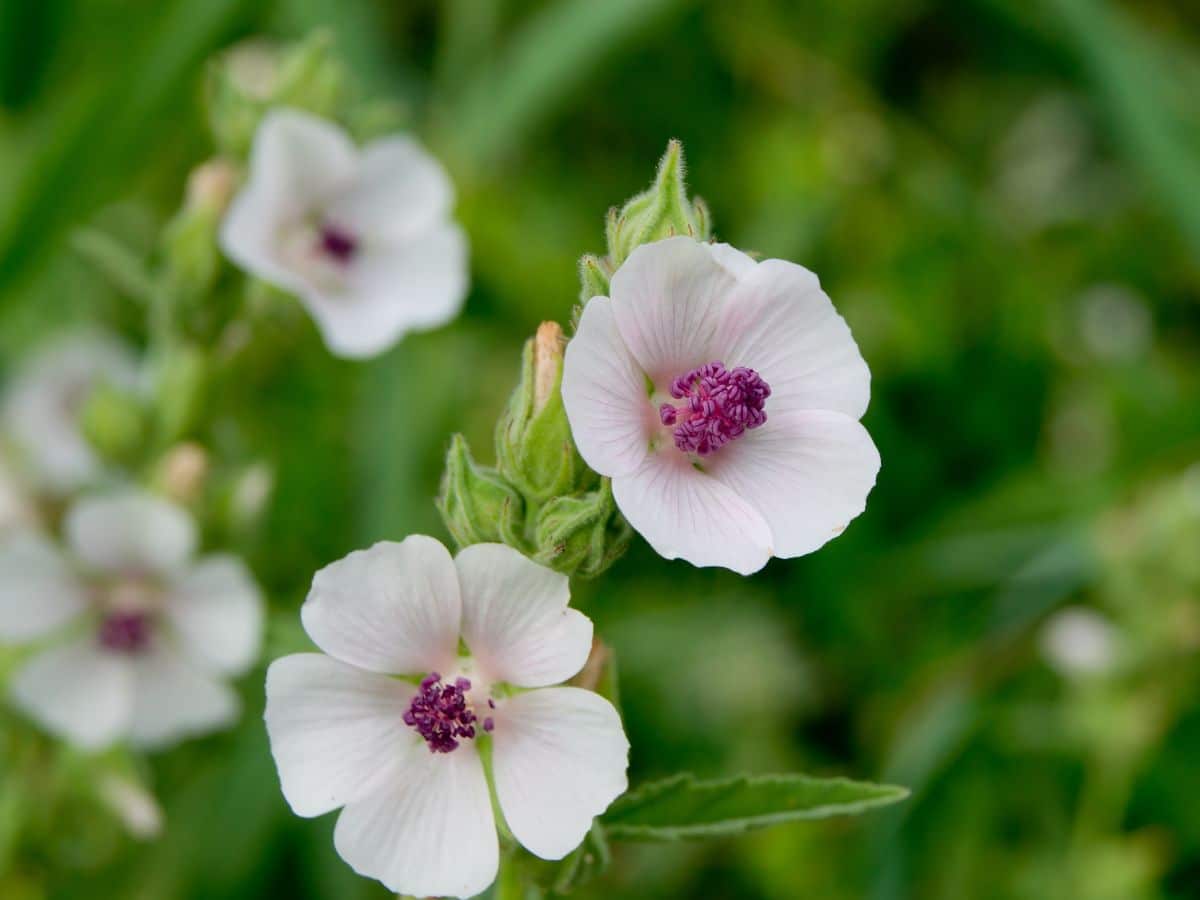
Mallow is a mild-tasting green, and like tofu, it tends to pick up the flavors of foods that you cook it with, but this isn’t necessarily a bad thing! This versatile plant is very nutritious and can work well in a lot of different dishes. Its natural, mucilaginous qualities work similarly to okra and can be used as a thickener in soups and other fare.
In fact, the whole plant is edible, including the flowers, stems, and leaves. Leaves can be sauteed like spinach, baked like kale chips, or used raw too. Not to mention, these plants are so pretty to look at that if they volunteer in your garden, you might not want to weed them out at all!
18. Shepherd’s Purse (Capsella bursa-pastoris)
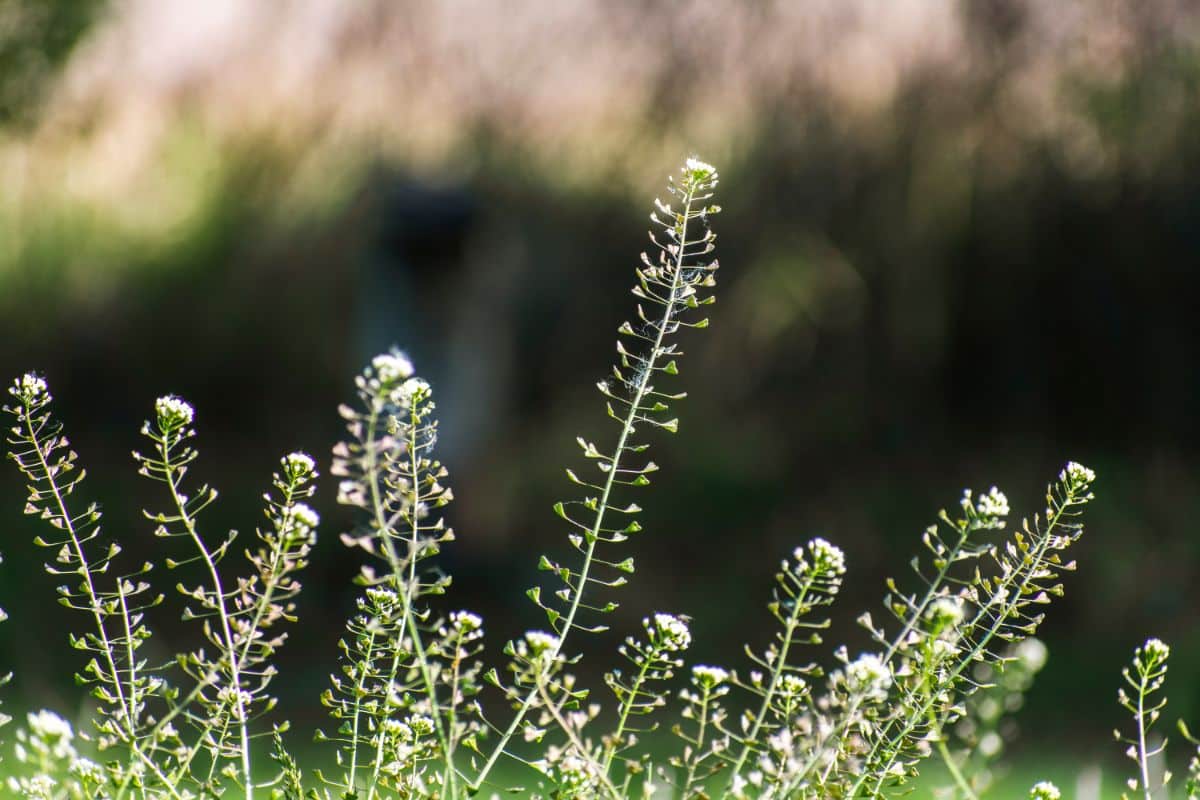
Shepherd’s purse is a low-growing plant with jagged leaves that extend from the plant’s center in a rosette form. In spring, this plant blooms small, white flowers on a tall and airy stem, which mature into heart-shaped seed pods that readily self-sow. These seed pods were the inspiration behind the plant’s name, as they are said to resemble the purses used by shepherds during the Medieval period.
All parts of this plant are edible, although they should be eaten in moderation for safety. Leaves can be eaten raw in salads, but they develop a pleasant, cabbage-like flavor when cooked. Seeds become peppery as they age and have been used as a pepper substitute, while zingy roots have a ginger-like quality to them.
19. Sheep Sorrel (Rumex acetosella)
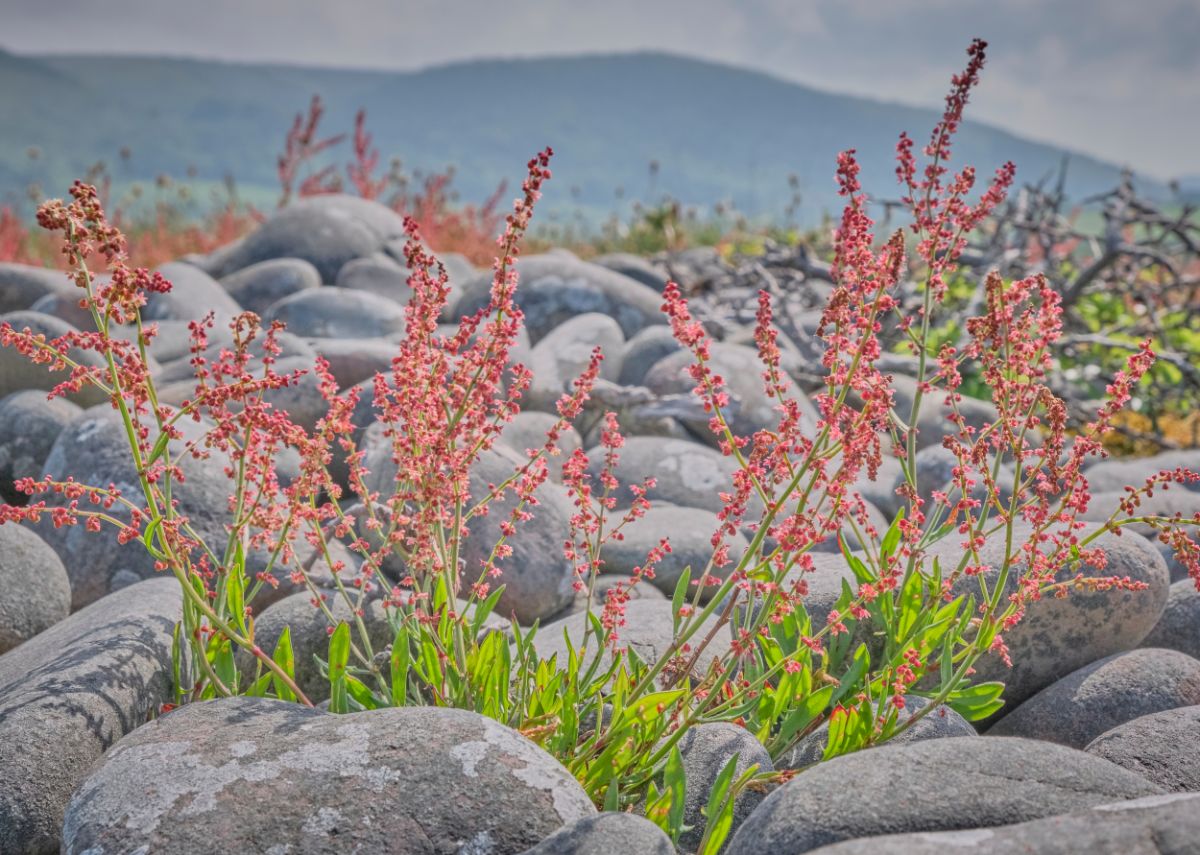
Unlike wood sorrel, sheep sorrel is a true sorrel and is closely related to the sorrel varieties you may sow in your garden, such as a bloody dock. With a similarly tart and lemony flavor, this green works well both cooked and raw and can be used like any other leafy green. Just keep in mind that that sour flavor comes from the high levels of oxalic acid in this plant, so be sure to use moderation when consuming it.
Sheep sorrel grows best in sandy, acidic soils and can often be found near wild blueberries. Leaves are elongated with slightly ruffled margins, and flowers appear on tall spikes which mature into deep red seeds. If you find sheep sorrel in your garden, be sure to weed or deadhead it often to keep it from spreading.
20. Garlic Mustard (Alliaria petiolata)
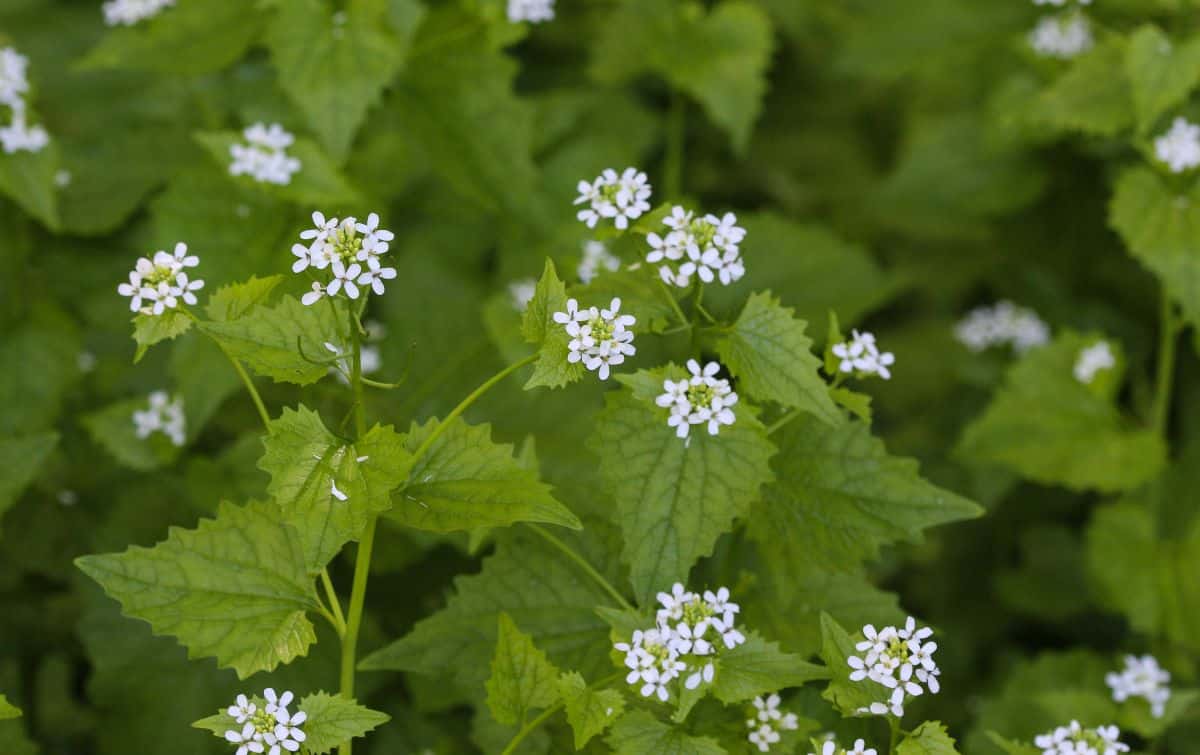
Another commonly invasive plant, garlic mustard, can devastate ecosystems, so it’s important that you pull it out whenever you see it. But once you’ve weeded out garlic mustard, it still has plenty of uses. It is edible, after all!
Foragers often eat the leaves and flowers of this plant, which have a spicy flavor somewhere between mustard greens, horseradish, and garlic. Harvesting plants when they’re still young is recommended as they are less bitter. Older greens can still be eaten, but they need to be thoroughly cooked as they can contain trace amounts of cyanide.
21. Stinging Nettle
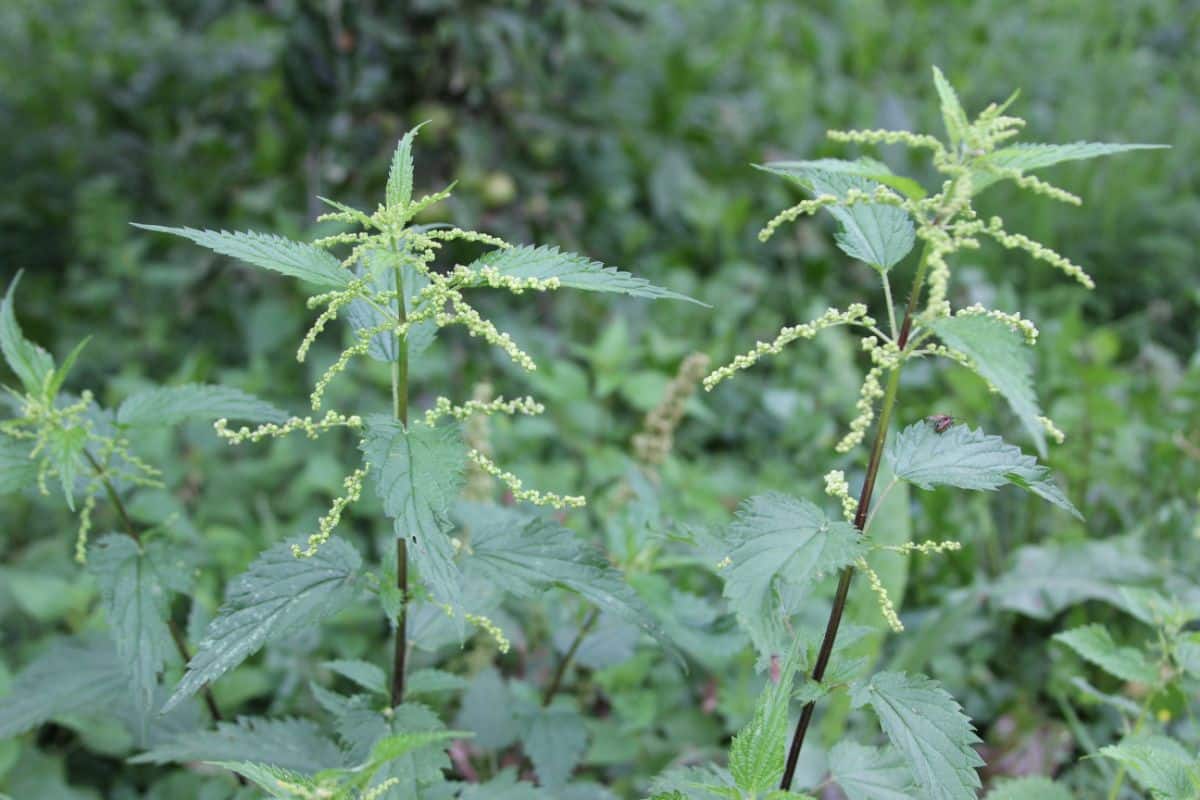
A stinging nettle is famous for its fiery stings, which can leave a nasty rash on your skin. To avoid this, always be sure to wear proper protection when picking stinging nettles – gloves and long sleeves are a must! – and opt for younger plants that have fewer stinging hairs. Regardless, chefs can’t get enough of stinging nettle and use this green in lots of dishes, from teas to pesto!
Stinging nettle tastes a lot like spinach, but it has a zingy flavor with hints of pepper. Plants can grow quite massively and are often found in moist areas. Easily reaching about 6’ high, stinging nettles develop a lot of seeds that rapidly spread if you don’t deadhead them.
Frequently asked questions
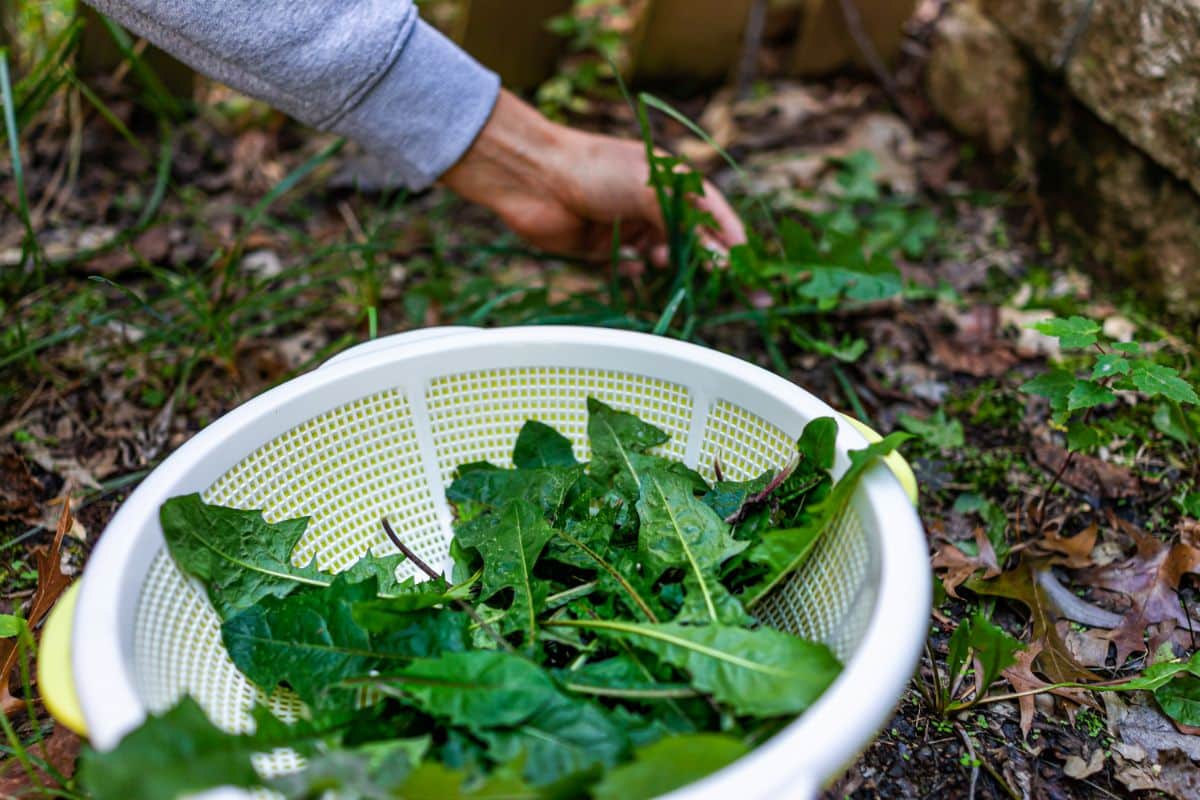
Dandelions are some of the easiest-to-find edible weeds, although there are plenty more. Chickweed, purslane, plantain, clover, and violets are also very abundant and can be found right in your backyard!
Edible weeds harvested from your garden should be perfectly safe to eat as long as they weren’t exposed to chemicals. Never eat weeds that were treated with pesticides or herbicides, and avoid plants that may have been exposed to other contaminants, such as lead paint flaking from old house siding.
Many weeds are toxic to humans, so it's vital that you understand plant identification before foraging for any wild edibles. Plants like pokeweed, poison hemlock, jimsonweed, and others are quite common and are toxic if ingested. Some edible weeds, such as wild garlic, may have toxic lookalikes, meaning you’ll need to be extra careful when harvesting them.
Roasted chicory or dandelion root has a rich and savory flavor that makes a fine coffee substitute if you’re looking to cut down on caffeine. Other wild edibles, like purslane, plantain, and lamb’s quarters, taste just as good as the leafy greens you purchase at the grocery store, but with an added bonus: they’re free!
Japanese knotweed and garlic mustard are two very common invasive plants that can be very destructive to ecosystems and difficult to eradicate. The good news is that these plants are edible and can be put to good use in the kitchen!
Eating invasive plants is a wonderful way to make destructive plants useful and cut down on grocery bills. Encouraging others to forage for edible, invasive plants can also help spread awareness and eradicate harmful invasives from your community. If you develop a taste for Japanese knotweed or garlic mustard, spread the word and get others interested in harvesting invasives too!
Summary
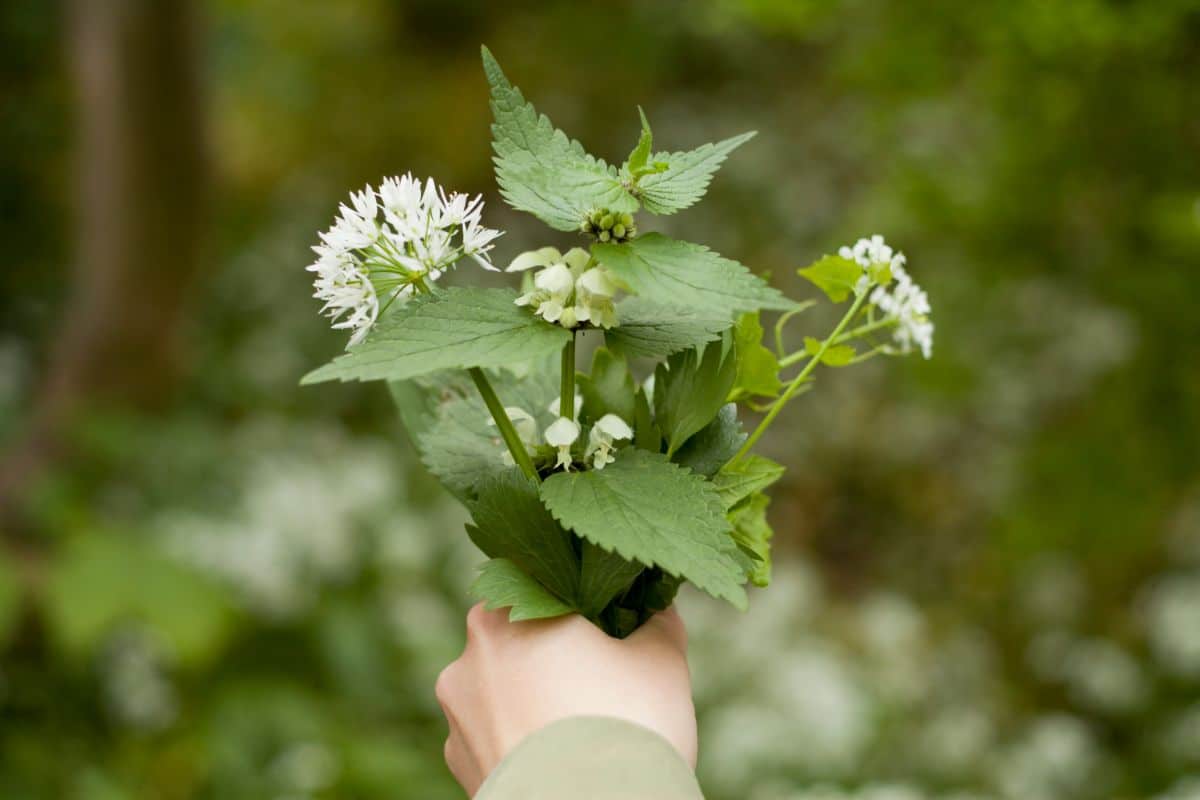
Weeds and invasive plants can be a nuisance, but they can also be incredibly destructive in certain ecosystems where they can outcompete native plants, destroy food sources for local wildlife, clog waterways, and more. Finding uses for these plants can make weeding less cumbersome and also inspire us to get out in nature and start eradicating invasive plants!
From common dandelions to pest plants like knotweed, there are lots of edible plants that you can find on wilderness hikes and in your backyard. So why not pick up a plant identification guide and start learning a few of your local wild edibles? You’re sure to find some new flavors to work with in your kitchen, and it may just inspire a new appreciation for the wilds in you too!
If you liked this article and want to learn more about foraging for wild foods, read up on making your own flour from acorns here.


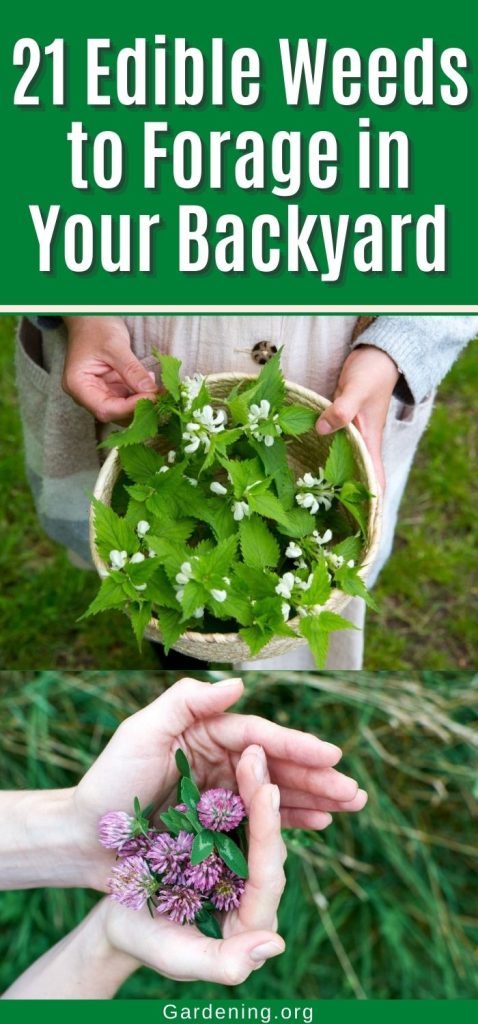
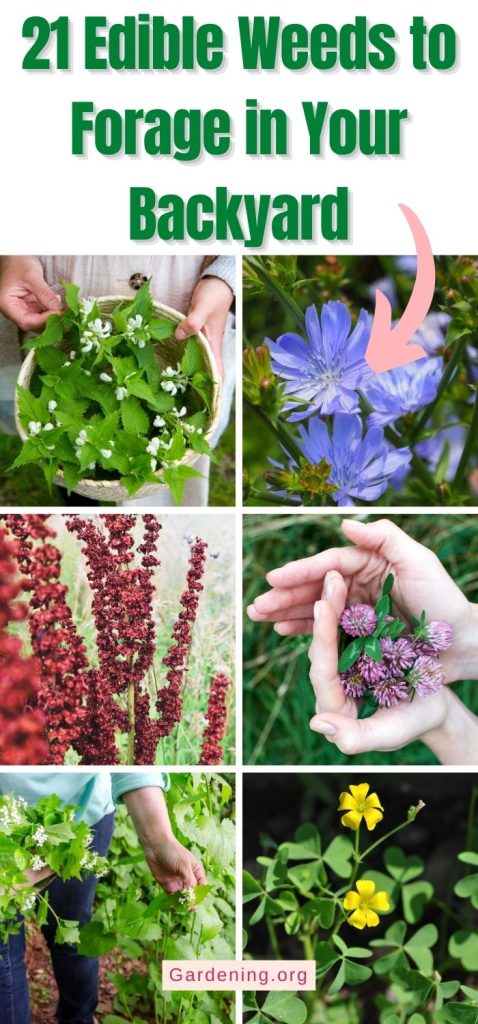
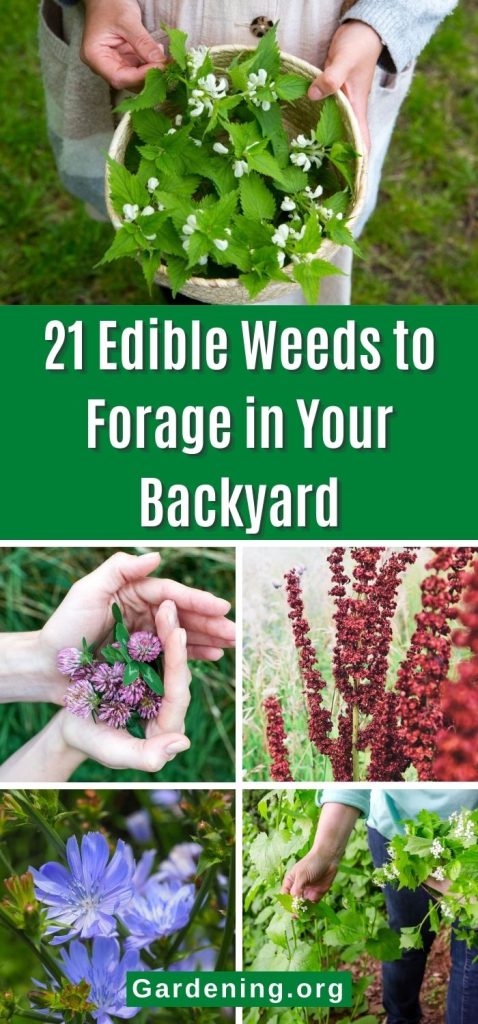
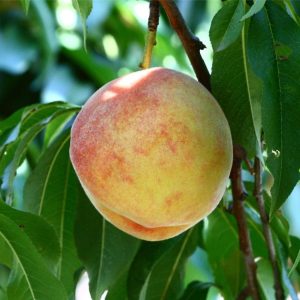
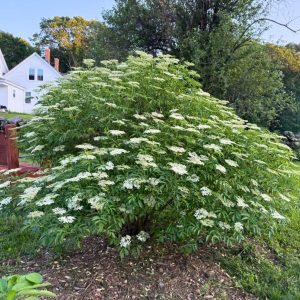
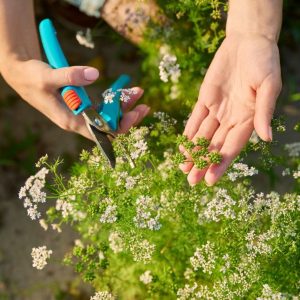
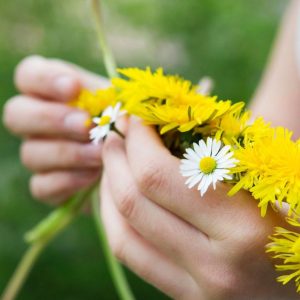
Mel
I love articles like this! So informative.